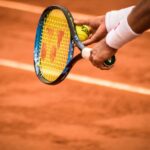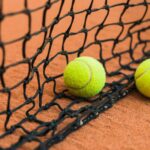Playing surfaces in sports can significantly affect the outcome of a game. Different surfaces require different strategies to optimize performance and increase the chances of winning. Here are some effective strategies for various types of playing surfaces:
Grass Surfaces
Grass surfaces are common in sports like football, soccer, and tennis. They provide a soft and natural feel, but they can vary in quality and condition.
Strategies:
- Footwear: Use cleats or shoes with good grip to prevent slipping, especially if the grass is wet or muddy.
- Speed and Agility: Focus on quick direction changes and short sprints, as grass can slow down movements compared to harder surfaces.
- Ball Control: Practice controlling the ball on uneven ground, as grass can cause unpredictable bounces.
- Stamina: Build endurance to cope with the additional energy required to move on a softer surface.
Clay Surfaces
Clay surfaces are mainly used in tennis. They are slower and provide higher bounces compared to grass or hard courts.
Strategies:
- Footwork: Master sliding techniques to reach the ball efficiently. This helps in maintaining balance and positioning.
- Topspin: Use heavy topspin to take advantage of the higher bounces and to control the ball better.
- Patience: Be prepared for longer rallies. Focus on consistency and endurance rather than power.
- Positioning: Stay close to the baseline to take advantage of the higher bounces and to prepare for the next shot.
Hard Surfaces
Hard surfaces, such as asphalt or concrete, are common in basketball, tennis, and many indoor sports. They provide a fast and consistent playing field.
Strategies:
- Speed: Exploit the fast pace by focusing on quick movements and fast reactions.
- Precision: Practice precise ball control and shooting, as hard surfaces provide predictable bounces.
- Impact Management: Use proper footwear with cushioning to reduce the impact on joints and muscles.
- Agility: Enhance agility training to take advantage of the consistent surface, allowing for quick direction changes.
Artificial Turf
Artificial turf is used in various sports like soccer, football, and field hockey. It mimics natural grass but is often faster and more consistent.
Strategies:
- Adaptability: Get accustomed to the faster ball speed and quicker movements on artificial turf.
- Footwear: Choose turf-specific shoes to ensure proper grip and minimize the risk of injuries.
- Ball Handling: Practice passing and dribbling on the turf, as the ball may move faster than on natural grass.
- Injury Prevention: Focus on flexibility and strength training to reduce the risk of injuries common on artificial surfaces.
Sand Surfaces
Sand surfaces are typical in beach volleyball and beach soccer. They are soft and challenging, requiring different skills and techniques.
Strategies:
- Strength and Endurance: Build leg and core strength to handle the resistance of the sand.
- Jumping: Practice jumping techniques to compensate for the soft surface, which can reduce jump height.
- Balance: Improve balance and stability, as sand shifts underfoot and can affect movement.
- Strategy: Use strategic placement of shots and passes to take advantage of the slower, more controlled movements required on sand.
Adapting to different playing surfaces is crucial for athletes. By understanding the unique characteristics of each surface and implementing appropriate strategies, players can enhance their performance and increase their chances of success. Whether it’s grass, clay, hard surfaces, artificial turf, or sand, mastering the specific techniques and approaches for each type of surface will make a significant difference in any game.

